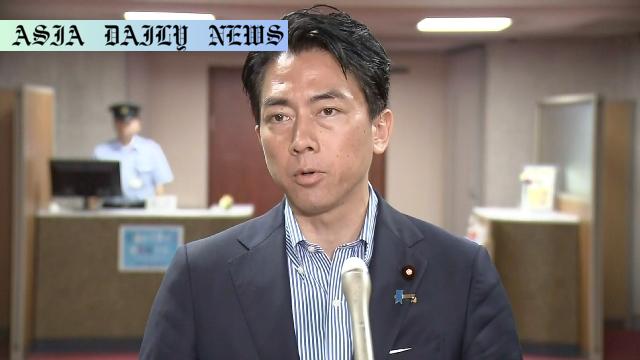Stockpiled Rice – Japan to sell stockpiled rice for food processing amid rising prices, addressing producer concerns.
Japan plans to release stockpiled rice to aid food production.
Producers are facing challenges due to high market prices.
Rice will be sold without bidding to ease business operations.
Last year, 10,000 tons of reserve rice were used for processing.

Introduction: Addressing Rising Prices Through Rice Reserves
Japan’s Agriculture Minister, Koizumi Shinjiro, has taken a significant step towards stabilizing the country’s food processing sector amidst rising rice prices. Announced on Friday, the government plans to release rice from its national stockpiles starting in August, targeting the production of food items such as miso soybean paste, snacks, and a variety of processed culinary products. This policy aims to address the widespread concerns of producers struggling with high costs and limited material availability, as well as to provide security for business operators in the food industry.
In recent years, the skyrocketing price of rice has prompted farmers to shift away from cultivating rice designated for processing purposes, redirecting their focus toward table rice production. This shift has led to a notable strain in supply chains, particularly for industries reliant on affordable processed-grade rice. The proactive involvement of the Japanese government seeks to remedy these supply chain bottlenecks by ensuring steady access to stockpiled reserves.
A Strategic Approach: Non-Bid Sales to Ease Supply Challenges
One of the key highlights of this initiative is the planned method of distribution. Koizumi revealed that the stockpiled rice will be sold through non-bid contracts, streamlining the process and ensuring businesses can readily acquire the necessary resources. This decision aligns with the government’s commitment to simplifying bureaucratic hurdles, thus expediting relief to the impacted sectors.
Reflecting on prior efforts, the agriculture ministry released 10,000 tons of rice from reserves last year, specifically for food processing purposes. While the exact amount to be released under this year’s plan will depend on forthcoming harvest yield estimates, the initiative reflects a consistent dedication to addressing the challenges faced by the food processing industry through bold and adaptive measures.
Stabilizing Business Operations Amid Market Volatility
Central to this policy’s impact is its reassurance to producers and business operators navigating a volatile market landscape. High rice prices have emerged as a pressing issue, with rising costs directly affecting both small-scale enterprises and major corporations. By leveraging its reserve stockpiles, Japan aims to reinforce the economic security of these enterprises, fostering a stable environment for sustained operational growth.
Moreover, the deployment of reserve rice underscores the government’s objective to create a long-term balance between Table Rice and Processed Rice supply chains. This dual approach not only supports food processing businesses but also manages to mitigate inflationary pressures that could impact the broader economy. Such a comprehensive strategy positions the agriculture sector as a strong pillar of Japan’s economic framework.
The Broader Implications of Strategic Rice Management
The Japanese government’s decision to release stockpiled rice signifies a broader recognition of food security challenges in a changing economic climate. Beyond addressing domestic concerns, this move has potential ripple effects for neighboring Asian economies that closely monitor Japan’s agricultural trends for guidance and inspiration. Establishing effective contingency strategies, such as leveraging national reserves, could pave the way for regional collaboration and innovation in food security.
On a domestic level, boosting confidence in the food processing sector is vital for ensuring job stability, supply chain robustness, and price fluctuations in the market. Japan’s ability to respond proactively has become a benchmark for adaptive policymaking during global food crises. These measures highlight how a balance can be achieved between addressing current economic challenges and planning for unforeseen contingencies.
Commentary
The Importance of Addressing Rising Rice Prices
Japan’s decision to release stockpiled rice for food processing reflects a strategic and thoughtful response to rising commodity prices. As the global economy faces increasing pressures from market volatility, inflation, and disrupted supply chains, proactive government intervention plays a critical role in maintaining stability. By ensuring the availability of rice for producers, Japan is prioritizing both economic growth and the welfare of its citizens amidst challenging circumstances.
Balancing Short-Term Relief and Long-Term Planning
What’s particularly commendable about this initiative is the dual focus on immediate action and sustainable planning. While the rapid release of processed-grade rice ensures short-term relief for businesses, its integration with harvest forecasts demonstrates a foresight-driven approach. Such policies not only address current market needs but also safeguard against potential future disruptions.
Lessons to Learn Beyond Japan
Japan’s move offers valuable lessons for other nations grappling with similar economic challenges in their agricultural sectors. Countries can learn from this example by investing in national reserves, maintaining transparent distribution mechanisms, and aligning policymaking with the demands of local markets. Moreover, this case serves as a reminder that even in prosperous economies, strategic interventions remain necessary for fostering industrial resilience and adaptability.
In conclusion, Japan’s decision to release stockpiled rice demonstrates a pragmatic approach to addressing real-time challenges while emphasizing the importance of long-term agricultural policies. This serves as a notable example of how governments can successfully balance economic priorities with humanitarian considerations, particularly in times of uncertainty.


